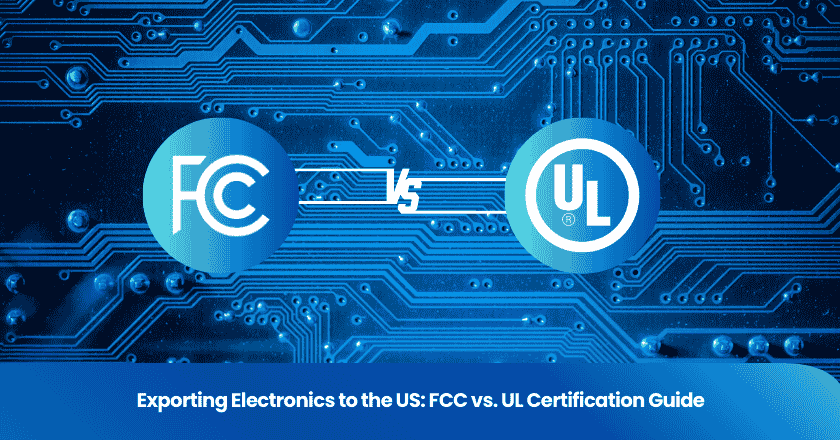
Electronics quality control plays a vital role in ensuring the reliability and performance of modern devices. As a manufacturer, you rely on precise processes to meet customer expectations and industry standards. In 2025, emerging trends are reshaping how you approach quality control. Cutting-edge technologies like AI, IoT, and blockchain are driving innovation, enabling technology-driven quality control systems. These advancements not only enhance defect detection but also streamline automated compliance management. By adopting these tools, you can stay ahead in a competitive market while maintaining high-quality standards.
AI and Machine Learning in Electronics Quality Control
Predictive Analytics for Quality Assurance
Predictive analytics is transforming how you approach quality control. By leveraging machine learning, you can analyze historical data to identify patterns and predict potential issues before they occur. This proactive approach minimizes defects and ensures consistent product quality. For instance, predictive models can forecast equipment failures, allowing you to schedule maintenance and avoid costly downtime. With artificial intelligence, you gain the ability to make data-driven decisions that enhance efficiency and reliability. As emerging trends continue to shape the industry, predictive analytics stands out as a key tool for maintaining high standards in electronics quality control.
Real-Time Defect Detection
AI-powered systems now enable real-time defect detection, revolutionizing traditional inspection methods. These systems use advanced algorithms to analyze images and sensor data, identifying flaws with unparalleled speed and accuracy. Unlike manual inspections, which can be time-consuming and prone to errors, AI-driven quality control ensures every product meets your specifications. Automation plays a crucial role here, as it allows you to inspect large volumes of components without compromising on precision. By integrating real-time defect detection into your processes, you can reduce waste, improve productivity, and deliver superior products to your customers.
AI-Driven Process Optimization
Artificial intelligence is not just about detecting defects; it also helps you optimize manufacturing processes. Machine learning algorithms analyze production data to identify inefficiencies and recommend improvements. For example, AI can suggest adjustments to machine settings or workflows to enhance output quality. This level of automation reduces human intervention, ensuring consistent results across production cycles. AI-driven quality control also fosters innovation by enabling you to experiment with new techniques and technologies. By embracing AI-driven process optimization, you stay ahead of the competition and adapt to the ever-evolving demands of the electronics industry.
Automation and Advanced Inspection Systems in Electronics Manufacturing
Automation is revolutionizing electronics manufacturing by introducing advanced inspection systems that enhance efficiency and precision. These systems reduce human error and improve the consistency of quality control processes. By adopting these technologies, you can streamline operations and maintain high standards in production.
Automated Optical Inspection (AOI) Technology
Automated Optical Inspection (AOI) technology is a game-changer in electronics manufacturing. It uses high-resolution cameras and sophisticated algorithms to inspect circuit boards and components. AOI systems detect defects such as misaligned parts, soldering errors, and missing components with remarkable accuracy. Unlike manual inspections, AOI operates at high speeds, allowing you to examine large volumes of products in less time. This technology ensures that every item meets your quality control standards. By integrating AOI into your production line, you can reduce waste and improve overall efficiency.
3D Printing for Prototyping and Defect Analysis
3D printing is transforming how you approach prototyping and defect analysis. This technology enables you to create detailed prototypes quickly, allowing you to test designs before full-scale production. You can identify potential flaws early in the process, saving time and resources. Additionally, 3D printing helps you analyze defects in existing products by replicating faulty components for closer examination. This approach fosters innovation by encouraging experimentation with new designs and materials. Incorporating 3D printing into your quality control strategy enhances your ability to deliver reliable and high-performing electronics.
Robotics in Quality Control
Robotics is another critical component of automation in electronics manufacturing. Robots equipped with advanced sensors and AI capabilities can perform repetitive inspection tasks with unmatched precision. These machines can handle delicate components, ensuring that no damage occurs during the inspection process. Robotics also allows you to scale operations without compromising on quality. For example, robotic arms can inspect solder joints or test circuit functionality faster than human workers. By leveraging robotics, you can achieve consistent results, reduce labor costs, and focus on innovation in other areas of your business.
Automation and advanced inspection systems are essential for staying competitive in the fast-paced world of electronics manufacturing. By embracing these technologies, you can enhance your quality control processes and deliver superior products to your customers.
IoT and Predictive Maintenance in Quality Control
The Internet of Things (IoT) is revolutionizing electronics manufacturing by enabling smarter and more efficient quality control processes. By connecting devices and systems, IoT provides real-time insights that help you maintain high standards and reduce operational inefficiencies.
Real-Time Monitoring of Equipment
IoT allows you to monitor equipment in real time, ensuring optimal performance throughout the production process. Sensors embedded in machinery collect valuable data, such as temperature, pressure, and vibration levels. This data helps you identify irregularities before they escalate into major issues. For example, if a machine starts overheating, IoT sensors can alert you immediately, allowing you to take corrective action. Real-time monitoring not only improves equipment reliability but also minimizes the risk of defects in your products. By leveraging IoT, you can ensure that your manufacturing processes run smoothly and efficiently.
Data-Driven Optimization for Manufacturing Processes
IoT empowers you to make data-driven decisions that enhance your manufacturing processes. By analyzing data collected from connected devices, you can identify patterns and trends that reveal inefficiencies. For instance, you might discover that a specific machine operates more efficiently at certain times of the day. With this insight, you can adjust your production schedule to maximize output. Data-driven decision making also helps you allocate resources more effectively, reducing waste and improving overall productivity. Incorporating IoT into your quality control strategy fosters innovation and ensures that your processes remain competitive in a rapidly evolving industry.
Minimizing Downtime with Predictive Maintenance
Predictive maintenance, powered by IoT, helps you minimize downtime and maintain consistent production. IoT sensors continuously monitor the condition of your equipment, predicting when maintenance is needed. This proactive approach prevents unexpected breakdowns that can disrupt your operations. For example, if a sensor detects unusual vibrations in a motor, it can recommend servicing before the motor fails. Predictive maintenance not only extends the lifespan of your equipment but also reduces repair costs. By integrating IoT into your quality control processes, you can achieve greater reliability and deliver high-quality products to your customers.
IoT is transforming electronics manufacturing by enabling smarter, more efficient quality control systems. By adopting this technology, you can improve real-time monitoring, optimize processes, and reduce downtime, ensuring your operations remain competitive and innovative.
Blockchain for Supply Chain Transparency in Electronics Manufacturing
Blockchain technology is transforming how you manage supply chains in electronics manufacturing. By providing a secure and immutable ledger, blockchain enhances supply chain transparency and ensures the authenticity of materials and components.
Material Authenticity Verification
Blockchain allows you to verify the authenticity of materials used in electronics manufacturing. Each material or component can have a unique digital record stored on the blockchain. This record includes details such as origin, certifications, and manufacturing processes. When you scan a product's QR code or RFID tag, you can instantly access this information. This capability ensures that only genuine materials are used in your production processes. By adopting blockchain, you can build trust with your customers and meet industry standards for quality control.
Enhancing Traceability in Supply Chains
Traceability is critical in electronics manufacturing, and blockchain makes it easier than ever. With blockchain, you can track every step of a product's journey through the supply chain. From raw materials to finished goods, each transaction is recorded in real time. This level of traceability helps you identify bottlenecks, reduce delays, and ensure compliance with regulations. For example, if a defect is discovered in a batch of products, you can quickly trace it back to its source. This ability to pinpoint issues enhances your quality control processes and minimizes disruptions.
Mitigating Counterfeit Risks
Counterfeit components pose a significant risk to electronics manufacturing. Blockchain helps you mitigate these risks by creating a tamper-proof record of every transaction in the supply chain. When you use blockchain, you can verify the legitimacy of suppliers and ensure that only authorized entities handle your materials. This transparency reduces the chances of counterfeit parts entering your production line. Additionally, blockchain enables you to provide customers with proof of authenticity, further strengthening their confidence in your products.
Blockchain technology is revolutionizing supply chains by improving transparency, traceability, and security. By integrating blockchain into your quality control strategy, you can enhance efficiency, reduce risks, and deliver reliable electronics to your customers.
Sustainability and Organic Electronics in Quality Control
Sustainability is becoming a cornerstone of electronics manufacturing as companies strive to reduce their environmental impact. By adopting eco-friendly practices and exploring organic electronics, you can align your processes with global sustainability goals while maintaining high standards in quality control.
Eco-Friendly Manufacturing Practices
Eco-friendly manufacturing practices help you minimize the environmental footprint of your operations. Switching to renewable energy sources, such as solar or wind power, can significantly reduce greenhouse gas emissions. You can also adopt water recycling systems to conserve resources during production. Additionally, using non-toxic materials in your processes ensures safer working conditions and reduces harm to the environment.
Another effective strategy involves optimizing energy consumption. For example, upgrading to energy-efficient machinery can lower electricity usage without compromising productivity. By implementing these practices, you not only contribute to a healthier planet but also enhance your brand's reputation among environmentally conscious consumers.
Organic and Biodegradable Electronics
Organic and biodegradable electronics represent a groundbreaking shift in the industry. These devices use materials like organic polymers and natural fibers, which decompose more easily than traditional components. By incorporating these materials, you can create products that are both functional and environmentally friendly.
For instance, organic light-emitting diodes (OLEDs) are gaining popularity due to their energy efficiency and reduced environmental impact. Similarly, biodegradable circuit boards made from cellulose or other plant-based materials offer a sustainable alternative to conventional options. Adopting organic electronics allows you to meet consumer demand for greener products while maintaining rigorous quality control standards.
Waste Reduction in Quality Control Processes
Reducing waste in quality control processes is essential for sustainable electronics manufacturing. One way to achieve this is by implementing lean manufacturing principles. These principles focus on eliminating unnecessary steps and optimizing resource use. For example, you can use advanced inspection systems to identify defects early, preventing the need for rework or scrapping entire batches.
Recycling defective components is another effective strategy. Instead of discarding faulty parts, you can repurpose or recycle them to minimize waste. Additionally, digital tools like AI and IoT can help you monitor and analyze production data, enabling you to identify inefficiencies and reduce material waste. By prioritizing waste reduction, you can lower costs and contribute to a circular economy.
Sustainability in electronics quality control is no longer optional. By adopting eco-friendly practices, exploring organic electronics, and reducing waste, you can lead the way in creating a more sustainable future for the industry.
TradeAider: Revolutionizing Quality Control with Innovation and Expertise
As a leading inspection and QA service provider, TradeAider is driven by visionary goals and a commitment to excellence. Our core strengths are founded on the founder's dedication and extensive experience in global trade and manufacturing, combined with our vast network of over 80,000 quality control specialists worldwide. This extensive network, coupled with the innovative TradeAider App, ensures successful quality assurance for every service order placed by our clients. We take pride in being part of Amazon's SPN for quality control, standing alongside industry giants.
Distinctive Advantages of TradeAider
TradeAider differentiates itself from traditional inspection firms through our commitment to efficiency, transparency, and innovation. We offer more than just lower costs; we provide superior efficiency and transparency, leveraging cutting-edge digital tools. Our esteemed clients benefit from:
• Real-Time Monitoring: Effortlessly monitor the full inspection process in real-time via the TradeAider Web App. This ensures complete visibility and control over the quality control process.
• Free Sticker-Attaching Service: We go the extra mile to ensure that our clients receive only quality-compliant products. Our Free Sticker-Attaching Service is a testament to our commitment to excellence.
• Trust and Security: We have a robust safeguard in place, along with a reliable "refund commitment" that instills trust from the very start. This commitment ensures that our clients can rely on us for high-quality services with confidence.
Embracing Technology for Enhanced Quality Control
TradeAider leverages advanced technologies to enhance our quality control processes. By integrating AI-driven analytics, IoT-enabled real-time monitoring, and blockchain for supply chain transparency, we ensure that our services are not only efficient but also aligned with the latest industry standards. Our innovative approach allows us to stay ahead of the curve, providing our clients with the highest level of quality assurance.
Commitment to Sustainability and Innovation
In addition to our technological advancements, TradeAider is committed to sustainability. We adopt eco-friendly practices and explore organic electronics to reduce our environmental footprint. By integrating sustainable practices into our quality control processes, we aim to lead the industry towards a greener future.
Join Us in Redefining Quality Control
At TradeAider, we are dedicated to continuous improvement and innovation. We invite you to experience the difference that our advanced technologies, extensive network, and commitment to sustainability can make. By choosing TradeAider, you are choosing a partner that is not only reliable and efficient but also at the forefront of industry innovation.
Cybersecurity in Electronics Quality Control
As electronics manufacturing becomes more advanced, cybersecurity plays a critical role in protecting your operations. Safeguarding sensitive data and securing connected devices ensures the integrity of your quality control processes. By building robust cybersecurity frameworks, you can stay ahead of potential threats and maintain trust in your supply chains.
Safeguarding Manufacturing Data
Your manufacturing data is one of your most valuable assets. Cyberattacks targeting this data can disrupt operations and compromise product quality. To safeguard it, you need to implement strong encryption protocols. Encryption ensures that only authorized personnel can access sensitive information.
Regularly updating your software is another essential step. Outdated systems often have vulnerabilities that hackers exploit. By keeping your systems up to date, you reduce the risk of breaches. Additionally, training your team on cybersecurity best practices helps prevent accidental data leaks. For example, teaching employees to recognize phishing emails can stop attackers from gaining access to your network.
Securing IoT Devices in Quality Control Systems
IoT devices are transforming electronics quality control by enabling real-time monitoring and data collection. However, these devices also introduce new security challenges. Hackers can exploit unsecured IoT devices to infiltrate your systems.
To secure your IoT devices, start by changing default passwords. Many devices come with factory-set credentials that are easy to guess. Using strong, unique passwords for each device adds an extra layer of protection. You should also segment your network. By isolating IoT devices from other systems, you limit the potential damage of a breach.
Regularly monitoring your IoT devices is equally important. Use security tools to detect unusual activity, such as unauthorized access attempts. This proactive approach helps you address vulnerabilities before they become serious threats.
Building Robust Cybersecurity Frameworks
A strong cybersecurity framework is essential for protecting your quality control processes. Start by conducting a risk assessment. Identify potential threats to your systems and prioritize them based on their impact.
Next, establish clear security policies. These policies should outline how your team handles sensitive data, manages access, and responds to incidents. For example, you might require multi-factor authentication for accessing critical systems.
Investing in advanced security tools is another key step. Firewalls, intrusion detection systems, and antivirus software help you defend against cyberattacks. Additionally, consider partnering with cybersecurity experts. They can provide valuable insights and help you stay updated on the latest threats.
Cybersecurity is not just about protecting data; it’s about ensuring the reliability of your electronics manufacturing processes. By taking these steps, you can build a secure foundation for your operations and maintain trust in your supply chains.
The advancements in electronics quality control for 2025 highlight the transformative role of technology in manufacturing. By integrating AI, IoT, blockchain, and sustainable practices, you can enhance efficiency, reduce defects, and meet evolving industry demands. Adopting these innovations ensures your processes remain competitive and future-ready.
To stay ahead, focus on continuous learning and experimentation. Invest in advanced tools, train your team, and monitor industry trends. Start small by implementing one new technology at a time. This approach helps you adapt seamlessly while maintaining high-quality standards.
FAQ
What is the role of AI in electronics quality control?
AI helps you detect defects, predict equipment failures, and optimize manufacturing processes. It analyzes data to identify patterns and suggests improvements, ensuring consistent product quality.
How does IoT improve quality control in manufacturing?
IoT enables real-time monitoring of equipment and processes. Sensors collect data, helping you identify inefficiencies and predict maintenance needs. This ensures smooth operations and reduces downtime.
Why is blockchain important for supply chain transparency?
Blockchain creates a secure, tamper-proof record of transactions. It helps you verify material authenticity, track products, and reduce counterfeit risks, ensuring trust and compliance.
Grow your business with TradeAider Service
Click the button below to directly enter the TradeAider Service System. The simple steps from booking and payment to receiving reports are easy to operate.




